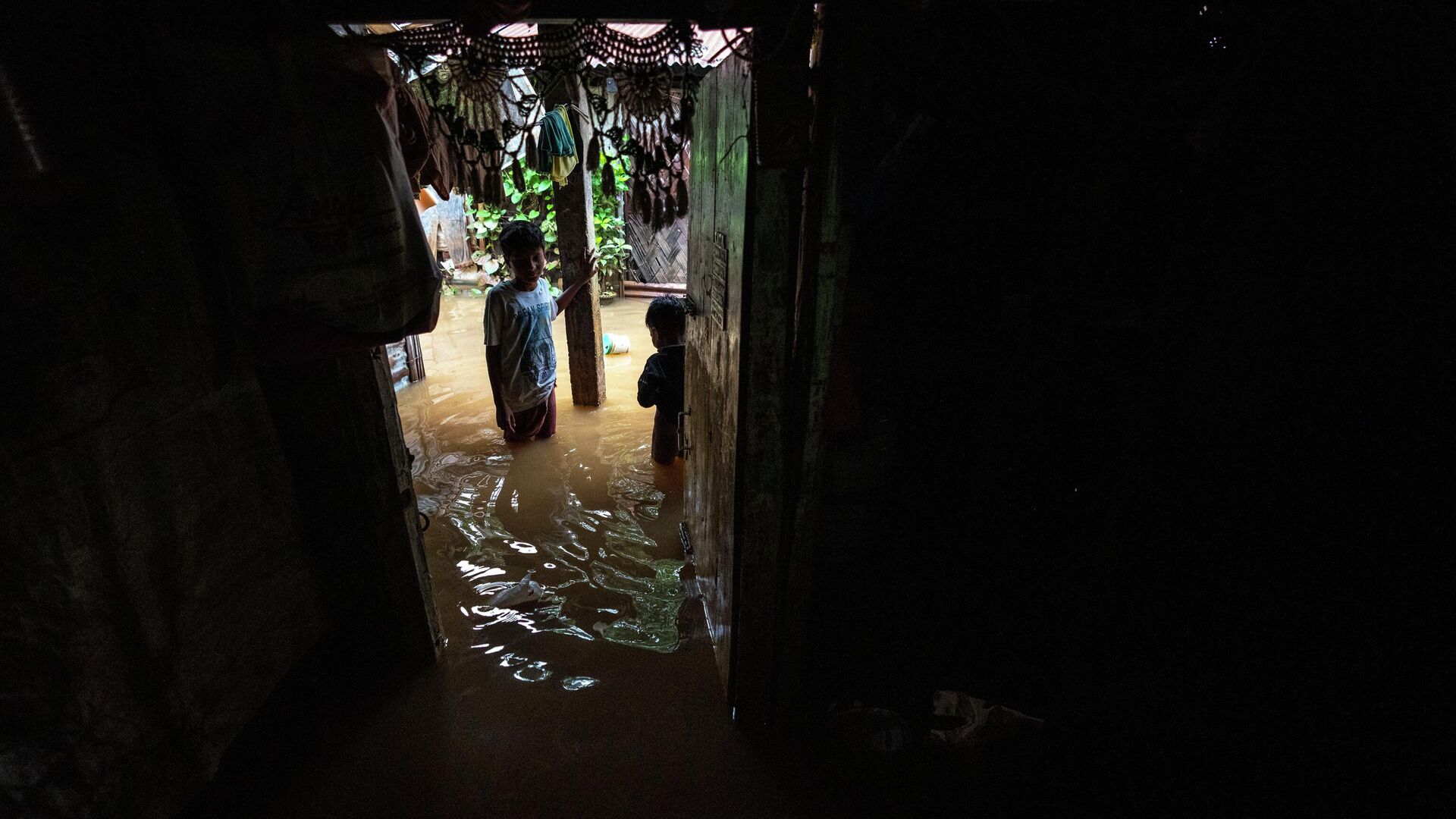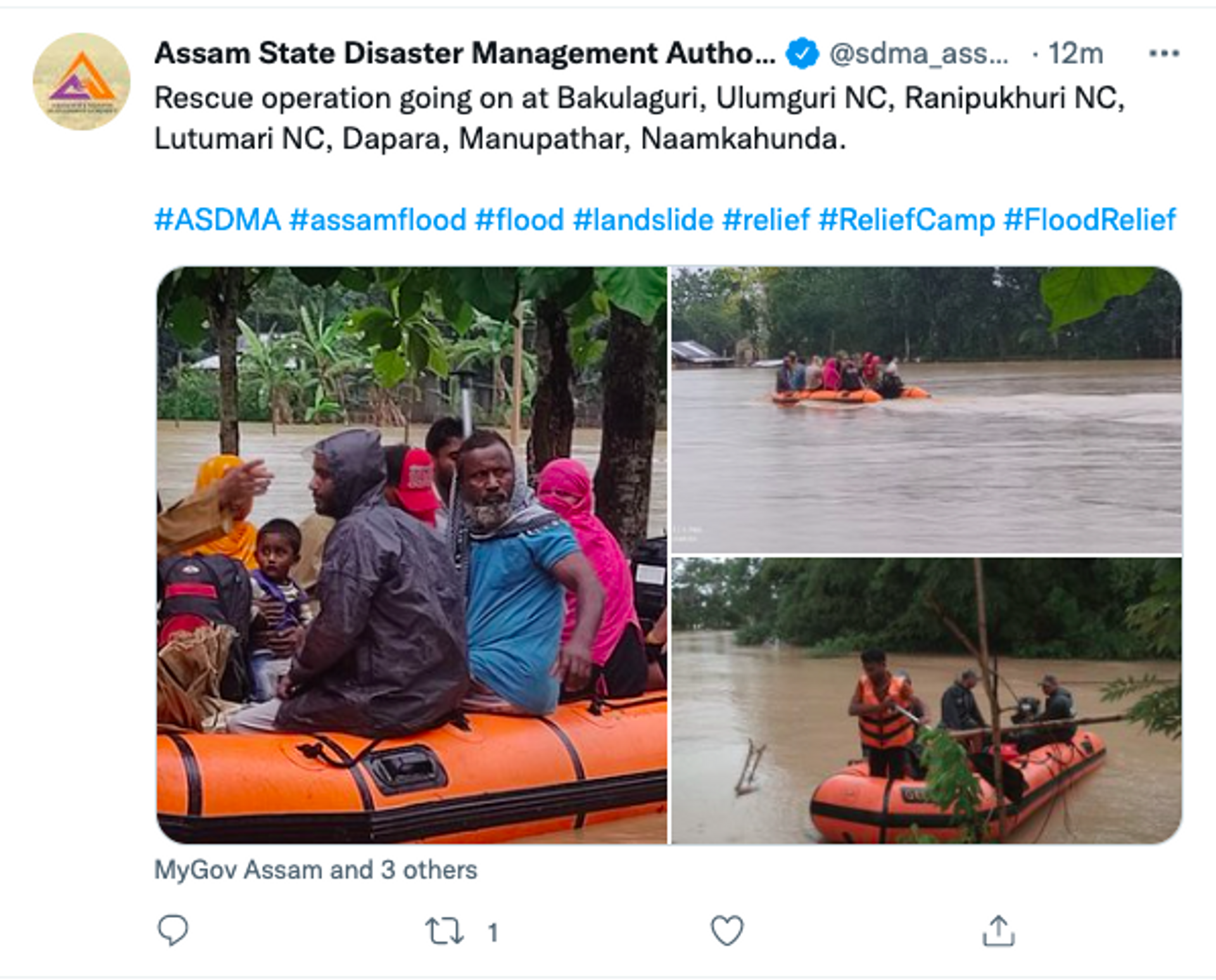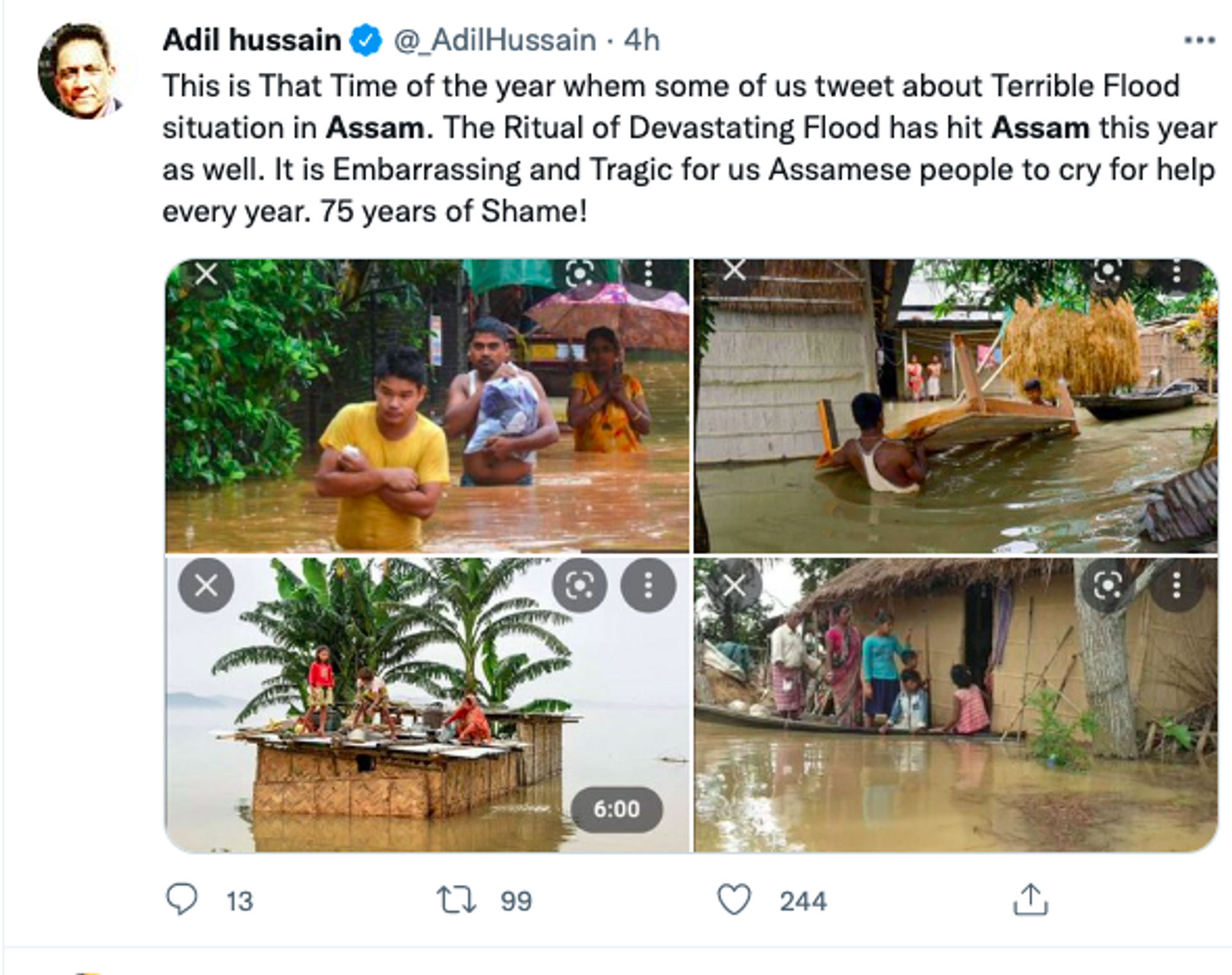At Least 50 Dead as Monsoon Rainfall Wreaks Havoc in Northeast India - Videos
14:43 GMT 17.06.2022 (Updated: 08:48 GMT 14.02.2023)

© AP Photo / Anupam Nath
Subscribe
India’s three northeastern states — Assam, Meghalaya, and Arunachal Pradesh -- have seen incessant rainfall since earlier this week. This year the Monsoon season commenced on 29 May in the country.
At least 50 people were killed and millions were affected by monsoon rains that hit India's northeast. There were reports of roads which normally connect the villages to bigger cities being washed away due to the downpour.
The states of Assam, Meghalaya, and Arunachal Pradesh have been witnessing rains since Tuesday.
A portion of National Highway 06 in Lumshnong, Meghalaya washed away following incessant rain. The highway connects the country to Barak Valley in South Assam as well as Mizoram, Tripura. pic.twitter.com/eViOwAoGVG
— Tora Agarwala (@toramatix) June 16, 2022
Landslide at #Akongre, #Tura, #Meghalaya
— Rupin Sharma (@rupin1992) June 17, 2022
Hope everyone is safe pic.twitter.com/xQa2t7MBul
The India Meteorological Department (IMD) has forecast more rainfall in the next five days in the region.
By Friday, 46 people were confirmed dead in Assam due to floods and landslides.
According to the state government, more than 1.1 million residents across 25 districts have been affected.

Assam Flood, June 2022
© Photo : Twitter

Assam Flood, June 2022
© Photo : Twitter
Extremely heavy rains have affected normal life in Meghalaya and Arunachal Pradesh. At least 13 people were reportedly killed in Meghalaya alone.
Portions of National Highway 6, which serves as the road link between the rest of the country and south Assam’s Barak Valley districts, Mizoram and Tripura, were washed away by flash floods on Thursday.
Many villages in these places are completely cut off, and state authorities are air-dropping food to flood-affected areas.
Due incessant rainfall since last Tuesday night once again Dima Hasao got badly effected, NH-27 Haflong-Silcher road is washed out at Harangajao.#AssamFloods2022 #assamfloods #dimahasaoflood #assamnews #NH27 #AssamRain #assamfloodvideo @ANI @PTI_News @Reuters @TV9Bharatvarsh pic.twitter.com/rVouYnhpvC
— Farhan Ahmed (@farhan_assam) June 15, 2022
Cherrapunji, in Meghalaya state, received 972 mm of precipitation in 24 hours, ending at 8:30 am on Friday. It is the most rain recorded in June since 1995, the IMD said.
Overall, northeast and eastern India have received 220.3 mm of rainfall, 39 percent more than normal, since 1 June. However, Meghalaya, Arunachal Pradesh and Assam have received up to 150 percent more rainfall than usual in a few areas.
Furthermore, the single-line railway route connecting Tripura, Mizoram, Manipur and the southern part of Assam has been cut off for more than a month, as the region witnessed excess rainfalls last month.
At least 60 people have died in Bangladesh and 57 in neighbouring India after incessant pre-monsoon rains severely hit northeast Bangladesh, and the Indian state of Assam in May.
According to climate experts, India and Bangladesh are extremely vulnerable to rising temperatures, including more severe monsoon flooding, fierce storms and higher sea levels.
“India and Bangladesh are vulnerable to climate change because of their proximity to the warm tropical waters of the Indian Ocean and the Bay of Bengal, which is increasingly experiencing heat waves,” according to a study published by the Indian Institute of Tropical Meteorology in January.
Every extra degree of global warming increases the amount of water in the atmosphere by about 7 percent, which inevitably affects rainfall.

